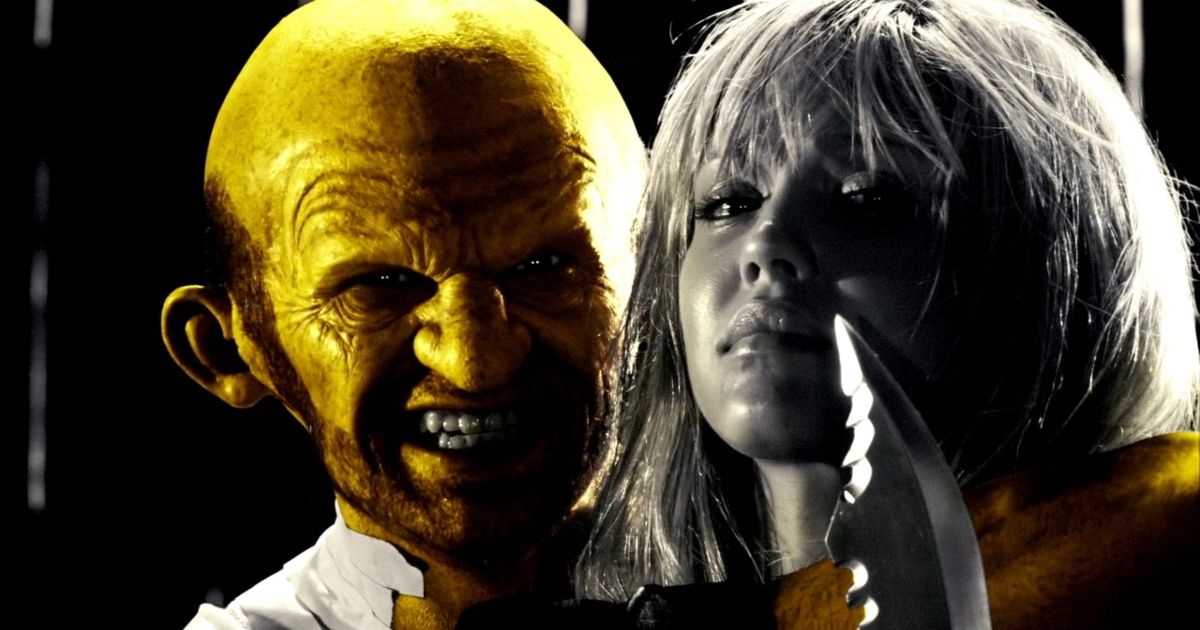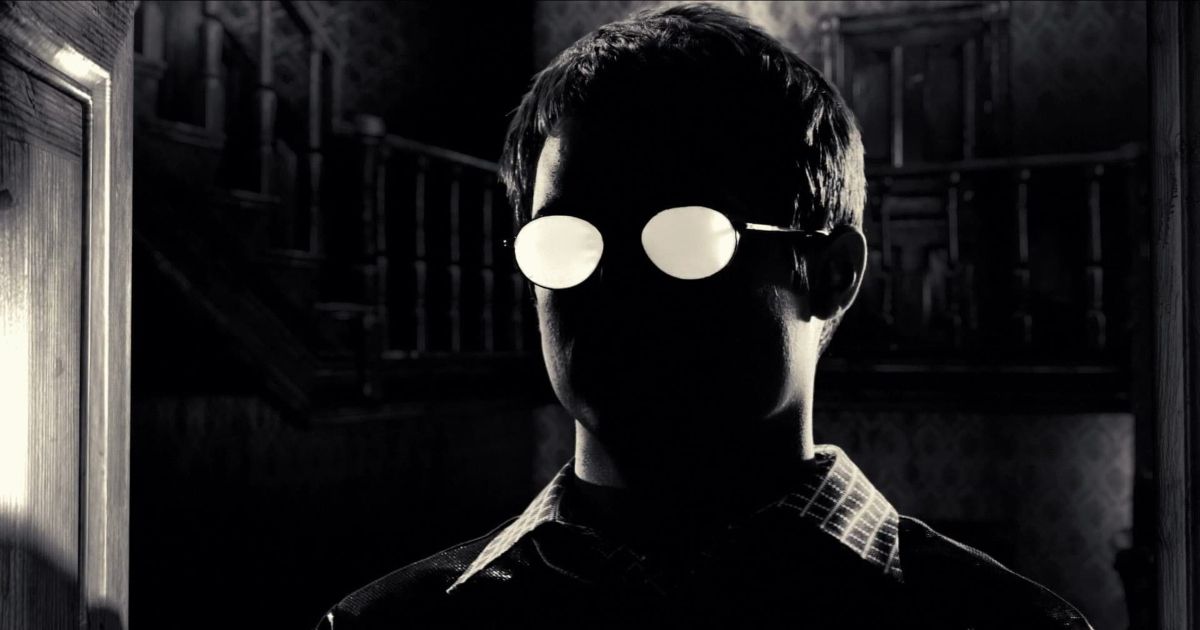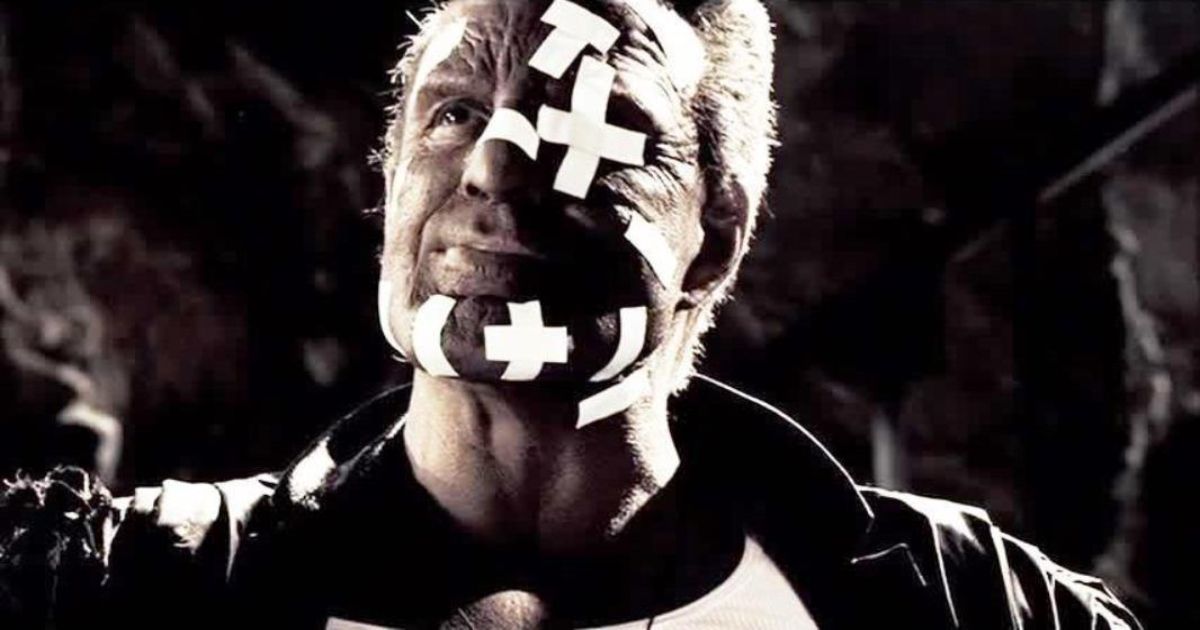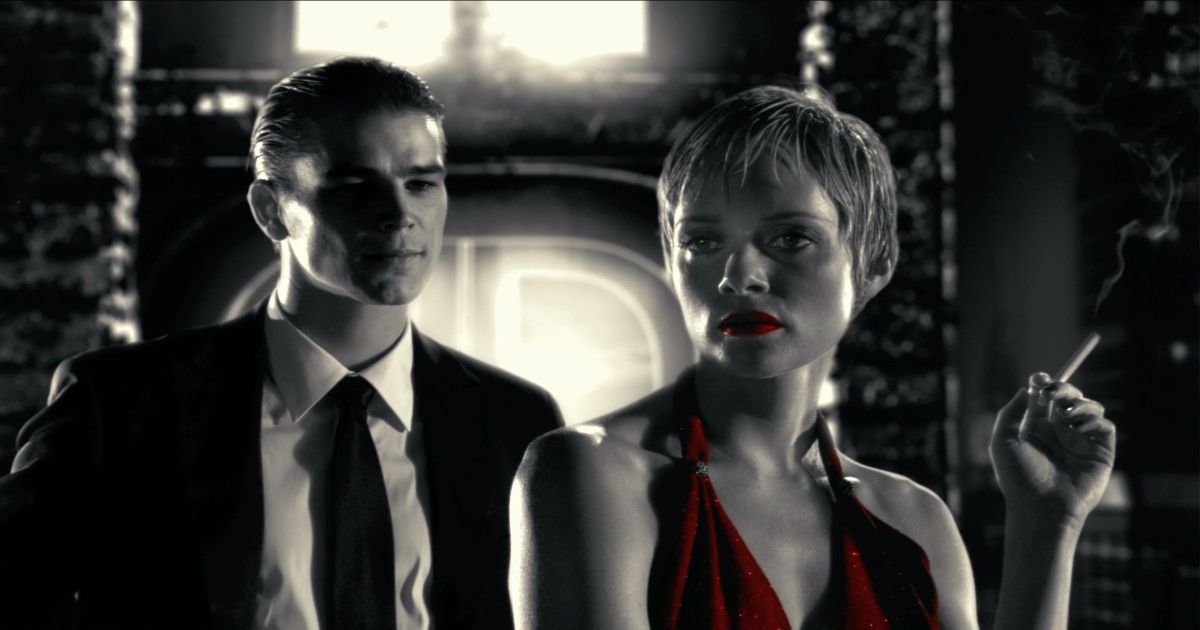In 2005, the successful graphic novel, Sin City, was made into a film that had a 40 million dollar budget and made over 150 million at the box office. It received extremely mixed reviews from critics and fans combined; critics picking it apart and even calling it a "noble" failure, since it still managed to be aesthetically pleasing to the eye. However, to this day, it remains one of the best modern noir films because of how authentic it was, and sure, there are a few cheesy moments with the sound and action sequences, but that's what makes it so good. This film gets into the grit of what makes a black and white movie so good, adding splashes of color to make it interesting and eye-catching, as well as keeping it close to the graphic novel. Sin City shouldn't be overlooked for the art that it is, and how it proves to be up there with some great noir films.
Pays Homage to the Graphic Novel
Animation World Network states that Frank Miller was hesitant at first to turn over his work, so that it could become a film, but when filmmaker Robert Rodriguez came forward with a script, Miller was seduced into saying yes. Rodriguez is known for his work with the Spy Kids films, making those movies look futuristic, but also have a video game-like quality to them. With converting a graphic novel into a noir film, this was right up his alley. With Sin City, and to the extensive care that Miller put into his work to make it what it is, Rodriguez had to successfully translate that to screen while making it look like the real deal. Not only that, but to make sure that the plot matched up with what was going on in the novels.
Fandom has a list of all the differences between the film and the graphic novel, but mostly, their fine details such as coloring in comparison with the novel and splashes of color that we see throughout the movie. However, the general plot, the characters, and the different segments all remain the same throughout the film, which is something the filmmakers made sure to do with this adaptation. The success that the writers had with this movie with translating everything from a graphic novel could be compared to what the creators of The Walking Dead have done with their various seasons and massive amounts of graphic volumes. They kept it pure enough to where audiences were content, and added enough juice to make it fit for a screen without running dry with long bouts of dialogue.
The Abundance of Characters
In Sin City, there is clearly an abundance of characters that fill the pages in the graphic novel as well as the film. There are many protagonists and antagonists that make up the plot, all having memorable lines, and even outfits that make them stick with you throughout the story. With Sin City, since it was such a successful graphic novel, the key to getting the casting right was major. Rodriguez clearly was the best person to handle this film, especially since he brought on Miller and Quentin Tarantino as his co-directors, and filled out the cast perfectly with big names from Hollywood. Not only big and flashy names, but a handful of newcomers that proved themselves to be fit for this film. Bruce Willis is the perfect choice as Detective Hartigan, who was known for his character in Die Hard and other action-thrillers.
It can be almost daunting and too much to have so many well-known celebrities in one movie, making audiences feel like the filmmakers are trying too hard and trying to fill seats in theaters. However, in Sin City, it was almost vital to have familiar faces in the roles of these characters. Jessica Alba as Nancy Callahan, Rosario Dawson as Gail, Elijah Wood as the strange Kevin, and Benicio del Toro as Jackie Boy in such a stacked cast, it was almost shocking. It was 2005, so to have this many celebrities fit into one movie was extremely exciting, for not only fans of the graphic novel, but fans of the individual actors as well. Other movies that pack celebrities in, such as Valentine's Day (2010) or New Year's Eve (2011), can be seen as corny or lacking in plot, but with Sin City, that wasn't the case.
Tone and Design
The cinematography plays a huge part in a movie like this, and the graphic novel aspects relied heavily on what the filmmakers chose to do. Since this is a noir film, most of the scenes were in black and white, creating that look of angst and mystery, where a detective has to be involved. Even if someone hadn't read the novels, you'd know what you were getting into the moment the movie started; the soundtrack setting the tone as characters are quickly introduced without pause. Something this movie gets very correct, is the timing of colors splashed into the black-and-white set, effectively catching the audience's eye, whether it be the Yellow Bastard or an aesthetically-placed, heart-shaped red bed in a dark room.
Rodriguez labels the tone for his film to be down and dirty, wanting the audience to get the feel for this gritty and crime-ridden city. He does a fantastic job of making sure fans know that this isn't a place you'd want to go to, and also keeps up with the several storylines in a way that's not confusing to viewers. The use of splitting the movie into parts, like the graphic novel, comes in handy, since we jump around so much in the film, not getting lost in the plot as we explore the different hardships of the citizens that live there.



